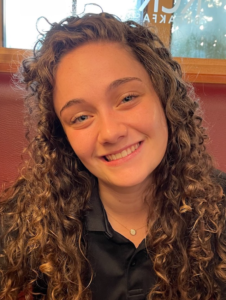
Name: Elle Dafnis
From: Orlando, Florida
Votes: 0
A Girl in my Town
A girl in my town can no longer walk the same. She can no longer breathe or look the same. Her burns cover her skin, and her hair is still growing back. She relearned everything: Eating, drinking, speaking, and cheering. Although this one girl in particular survived, many did not. Many do not even have a second chance at life. She did and does, and her story has impacted many, where this account begins today.
A girl in my town lives in an era where distracted driving deaths are at an all-time high. People can simultaneously look at their phones, read a text, and take a life. Her story, however, is not common. The driver that hit the girl was distracted and unaware that he was dragging the girl for over 400 feet. Her screams flood the consciousness of her friends, who were untouched. Her body was 30% burned, and her life support did not give a strong indicator that she would survive. But why does this happen? Why is her story not everywhere? Is this driving normalized? The truth is, it is. According to the CDC, distracted driving kills eight people daily and 3,500 people annually. The average family has about four people, so if you think about it, that is an average of two families per day and 875 annually. With such statistics, anyone can look and feel it is relatively high, but why does this occur? Although one can blame the person, the phones and their capacity for addiction are to blame.
A girl in my town lost her phone that night. The night she was dragged, burned, and thought dead at the scene. Her phone is likely the same, but justifications for using it are now expected to differ. Using phones while driving has become an addiction and a habit. Watching students in the school parking lot text and drive is a norm, and honestly, it is sickening. It baffles me how a tiny invention such as the phone can cause the loss of two families per day. The pings and vibrations we receive may cause us to have this psychological response to answering the phone. One way to reduce this idea of immediately looking at the telephone once a notification has gone off is to not look at it. The more one classically conditions themself away from a stimulus, the more likely they are to change and form healthier habits. The first step to realizing an issue with phone usage is thinking: “Have I ever almost crashed with the phone in my hand?” If the answer is yes, then likely there needs to be conditioning of new habits.
A girl from my town has long-term scars, both physical and mental. Her scars represent the power of distracted driving. 1.6 million car accidents occur using a cell phone, and 1 out of 4 are caused by texting and driving. Drivers’ education is a critical period for teenagers, as the primary goal is to educate and prevent accidents from occurring. However, this education needs to last and be effective. If education is not making an impact, then there is no way to promote change. Another way to drive safely is to install an app to moderate the driver. If they pick up the phone, it will not turn on, which needs to happen to get used to the feeling of not using it while driving. Insurance companies can begin to create more incentives for using an app while driving, such as reduced claims or even gift cards for every 1,000 miles driven. To prevent future generations from bearing the scars of a victim, this is another step that can be taken to decrease fatality statistics.
A girl from my town is now at college and living the life she was meant to live. This life stopped when she had her accident in high school, but now she is thriving. Her spirit teaches others like me to respect the privilege of driving and the responsibility it holds. Driver’s education needs to be taken seriously by the students and the parents that enforce it and who the student typically learns from. There needs to be more enforcement to reduce the average number of deaths. I propose taking a driver’s ed course every five years or yearly to keep the license to ensure continuity. States are starting to ticket people caught texting while driving, which should become national law. With more liabilities comes more responsibility. The power the driver holds behind the wheel is superior, but it needs to be taken seriously.
The girl from my town is someone I do not know, nor will I probably ever know. To know her is a gift; to know her story is a lesson. It is because of her each day I drive, knowing what my phone’s power can do, which is why her story will remain with me forever.